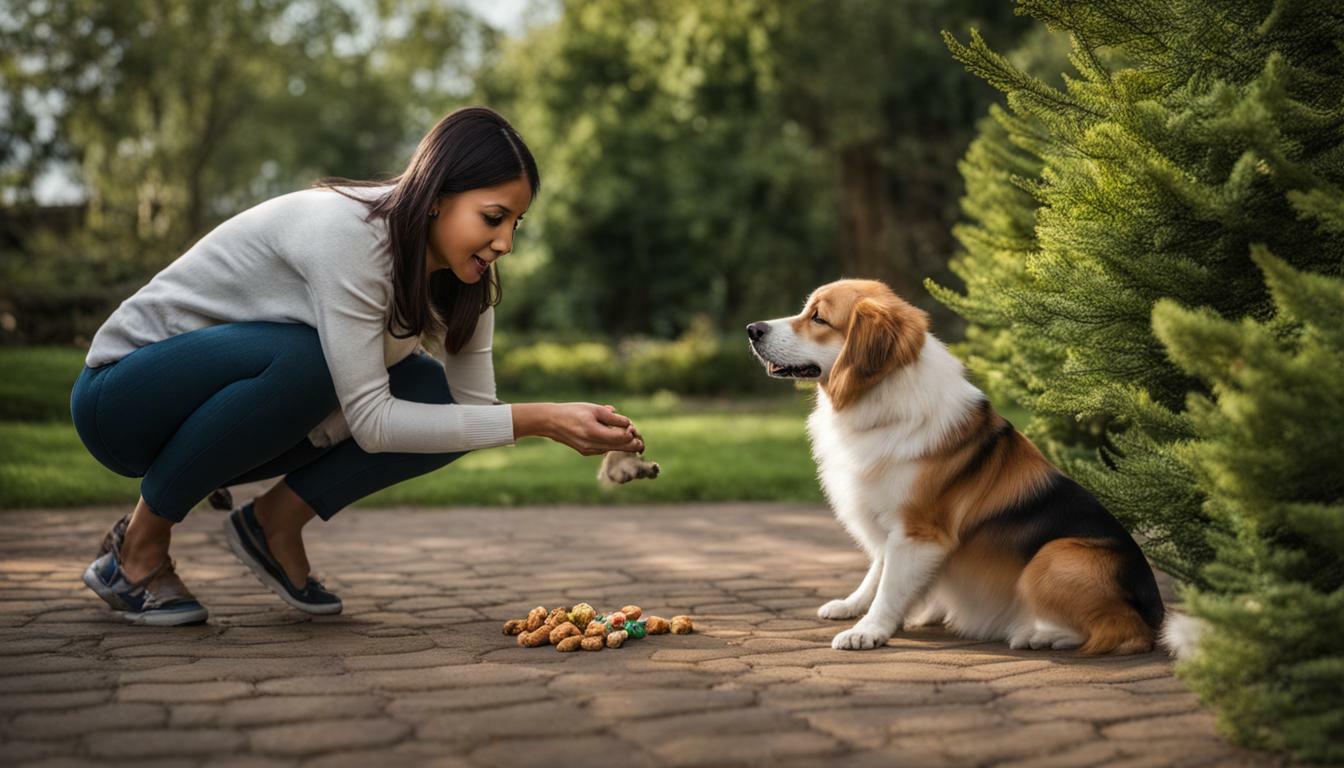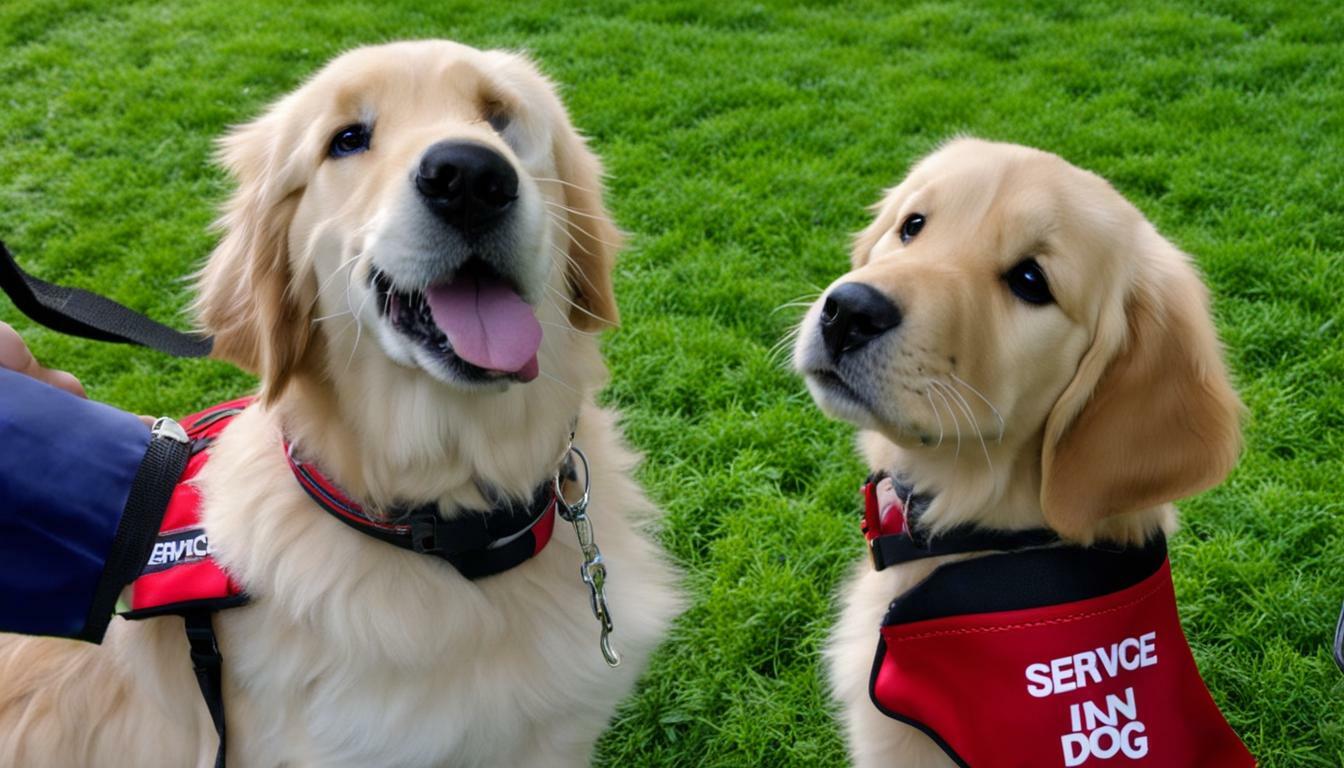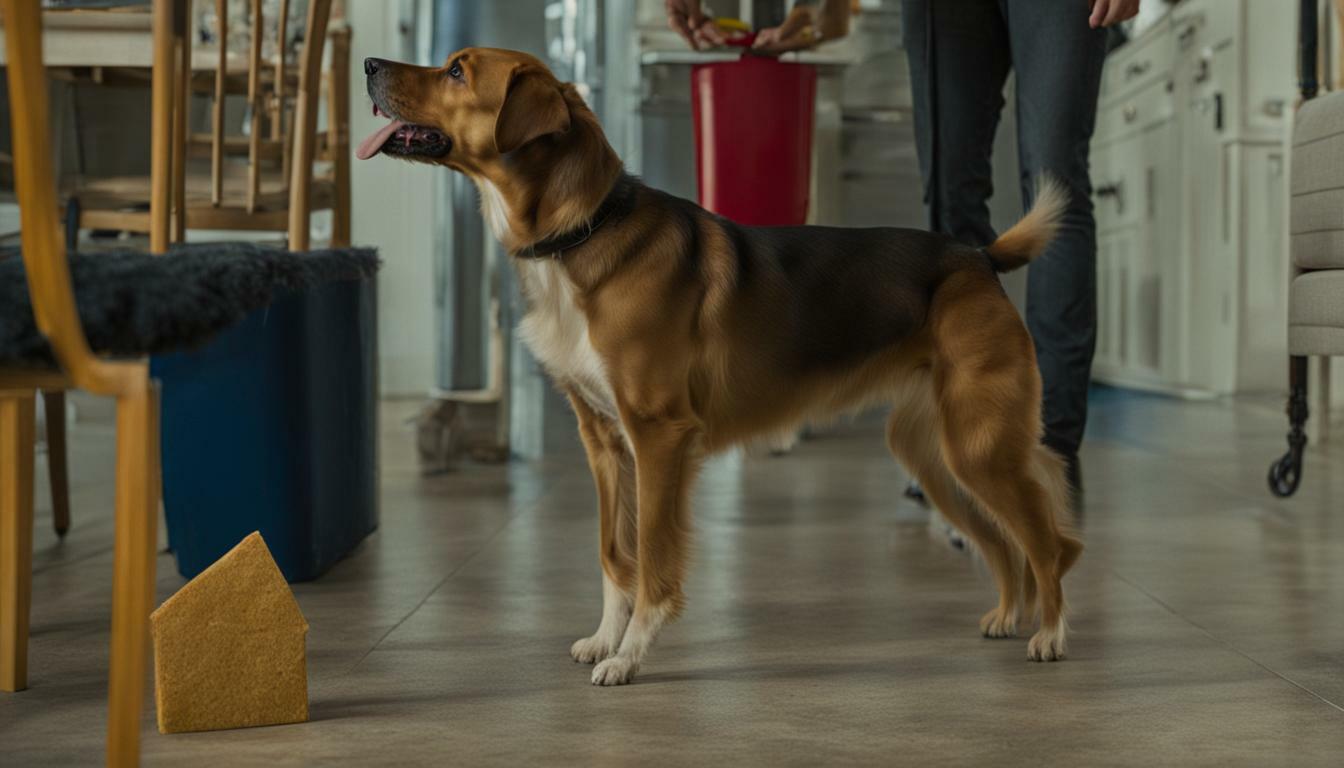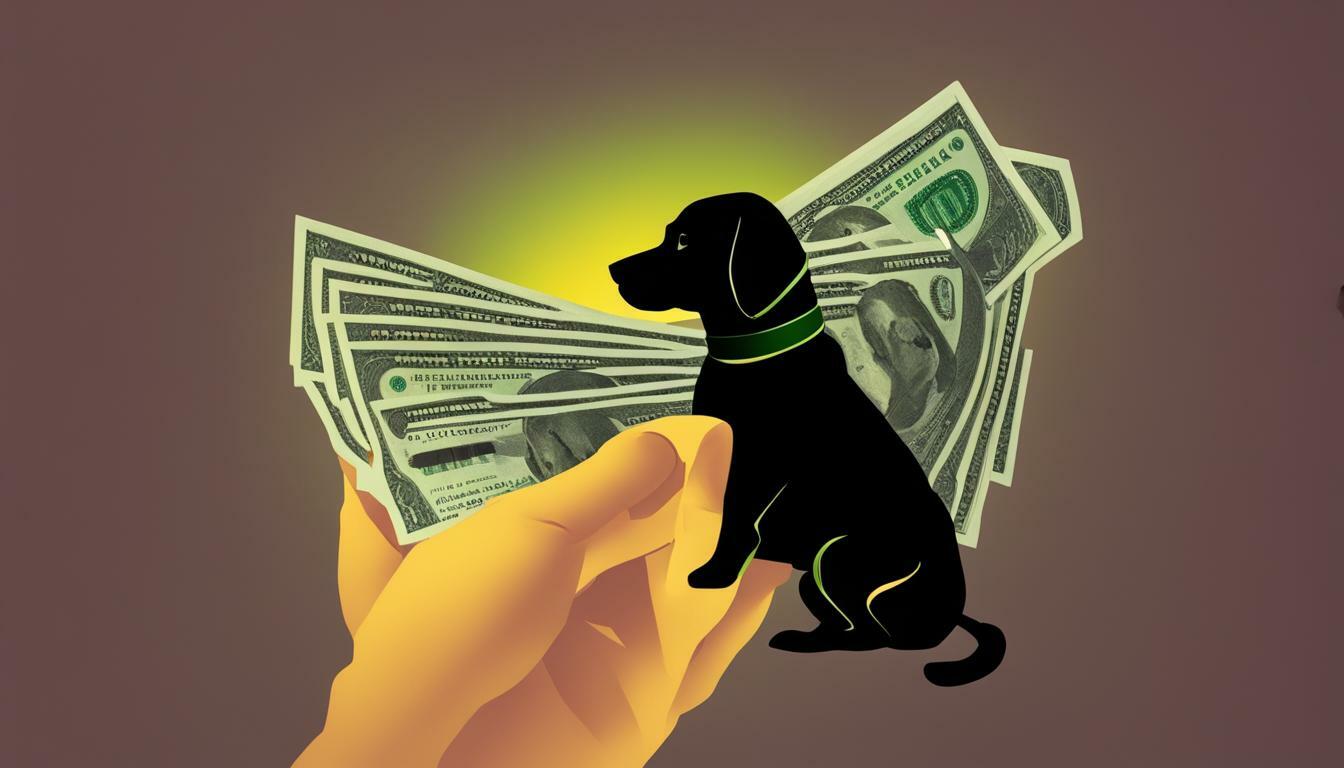If you have a scared dog, training them can seem like a daunting task. However, by creating a safe and supportive environment and using positive reinforcement techniques, you can help your furry friend build their confidence and overcome their fears. In this comprehensive guide, we’ll provide you with practical tips and advice on how to train a scared dog, from understanding the root causes of anxiety to implementing effective training techniques.
- Training a scared dog requires patience, understanding, and a tailored approach.
- Creating a safe and calm environment is crucial for building your dog’s confidence.
- Positive reinforcement training is highly effective for training scared dogs.
- Socialization and gradual exposure to new experiences can help your dog overcome their fears.
- Identifying triggers and avoidance techniques can prevent overwhelming situations for your pet.
Understanding Fear and Anxiety in Dogs
Before we dive into training techniques, it’s essential to understand the root causes of fear and anxiety in dogs. Many dogs experience fear and anxiety, whether due to past trauma, lack of socialization, or genetic disposition. Identifying the source of your dog’s fear is crucial for creating an appropriate behavior modification plan.
Dogs exhibit fear and anxiety in many ways, including destructive behavior, excessive barking, aggression, or withdrawal. Common triggers for dog anxiety include loud noises, unfamiliar people or animals, and changes in routine or environment.
It’s important to note that fear and anxiety can vary in intensity and duration. Mild anxiety may be manageable with behavioral modification techniques, while severe anxiety may require medication or professional assistance.
There are many ways to overcome dog anxiety, but it’s essential to tailor your approach to your dog’s specific needs. By understanding your dog’s behavior and triggers, you can develop a customized training plan that will help them overcome their fears and build confidence.
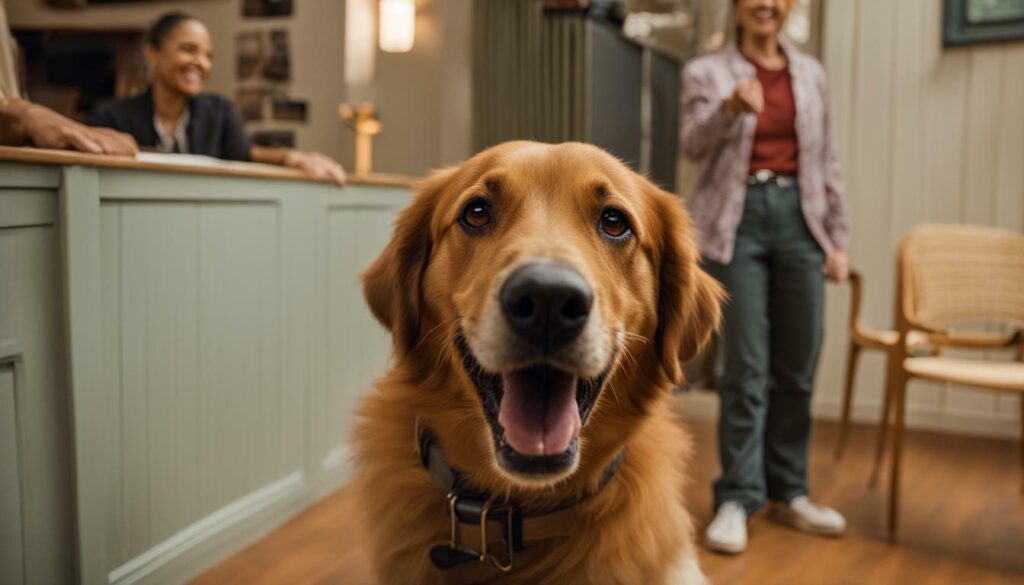
Creating a safe and calm environment is an essential first step in training a scared dog. When your dog feels secure, they are more receptive to learning and less likely to display fearful behaviors. Here are some calming techniques for fearful dogs:
- Provide a safe space – Set up a comfortable and secure area for your dog to retreat to when feeling anxious. This could be a crate, a designated room, or a cozy bed in a quiet corner.
- Use calming scents – Certain scents, such as lavender and chamomile, are known for their calming properties. Consider using a diffuser or spray to infuse your dog’s environment with these scents.
- Play soothing music – Soft, instrumental music can have a calming effect on dogs. Try leaving some calming music playing in your dog’s safe space or during training sessions.
- Use positive reinforcement – Reward your dog with treats and praise when they display calm behaviors. This will help to reinforce positive associations with training and create a more relaxed atmosphere.
- Avoid punishment – Punishing your dog for fearful behaviors can exacerbate their anxiety. Instead, redirect their attention to a more positive activity or remove them from the situation causing their fear.
By implementing these techniques, you can create a safe and calm environment that will help your dog feel more secure and build their confidence.
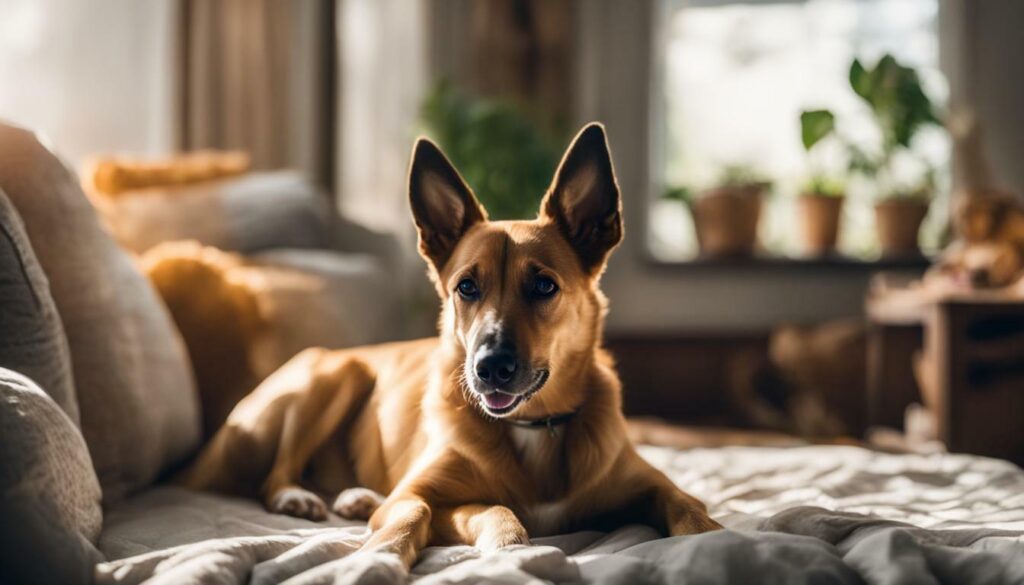
Fear-based aggression is a common issue in scared dogs. Desensitization and counterconditioning are powerful techniques for modifying fear-based behavior in dogs. Desensitization involves gradually exposing your dog to the source of their fear in a controlled and positive environment. Counterconditioning involves replacing the fearful response with a positive one.
When using desensitization and counterconditioning, it’s essential to start with a low-level exposure to the trigger and gradually increase intensity as your dog becomes more comfortable. For example, if your dog is afraid of loud noises, start by playing a low volume recording of the noise and gradually increase the volume over time.
| Tip: | Use high-value rewards, such as favorite treats or toys, to reinforce positive behavior during training. |
|---|
It’s important to note that desensitization and counterconditioning require patience and consistency. It may take several sessions for your dog to show progress, so don’t give up if you don’t see immediate results.
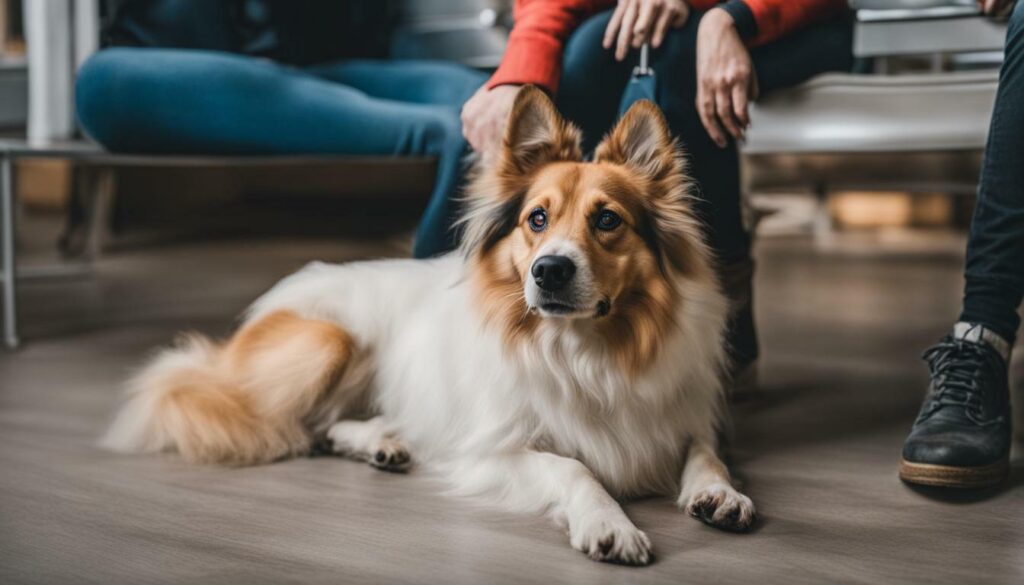
With time and effort, desensitization and counterconditioning can be highly effective in reducing fear-based aggression in dogs and increasing their confidence.
Positive Reinforcement Training
Positive reinforcement training is a highly effective approach for training scared dogs. This method involves rewarding desired behaviors with treats, praise, or affection, which encourages your dog to repeat the behavior.
When using positive reinforcement, it’s crucial to reward your dog immediately after they exhibit the desired behavior. This will help your dog associate the behavior with the reward, making it more likely they will repeat the behavior in the future.
It’s also important to use the right type of reward for your dog. Some dogs are highly food motivated, while others respond better to praise or affection. Experiment with different rewards to see what works best for your pet.
When training with positive reinforcement, it’s important to avoid punishing your dog for undesired behaviors. Punishment can increase fear and anxiety in scared dogs and lead to further behavior problems. Instead, focus on rewarding and reinforcing positive behaviors.
Positive reinforcement can be particularly effective for addressing fear-based aggression in dogs. By rewarding calm and relaxed behavior in fearful situations, you can help your dog feel more comfortable and reduce their aggression towards perceived threats.
Remember, positive reinforcement training takes time and patience. Consistency is key, and it’s important to maintain a regular training routine to see results. With time and dedication, positive reinforcement can be a powerful tool for helping your scared dog overcome their fears and build confidence.
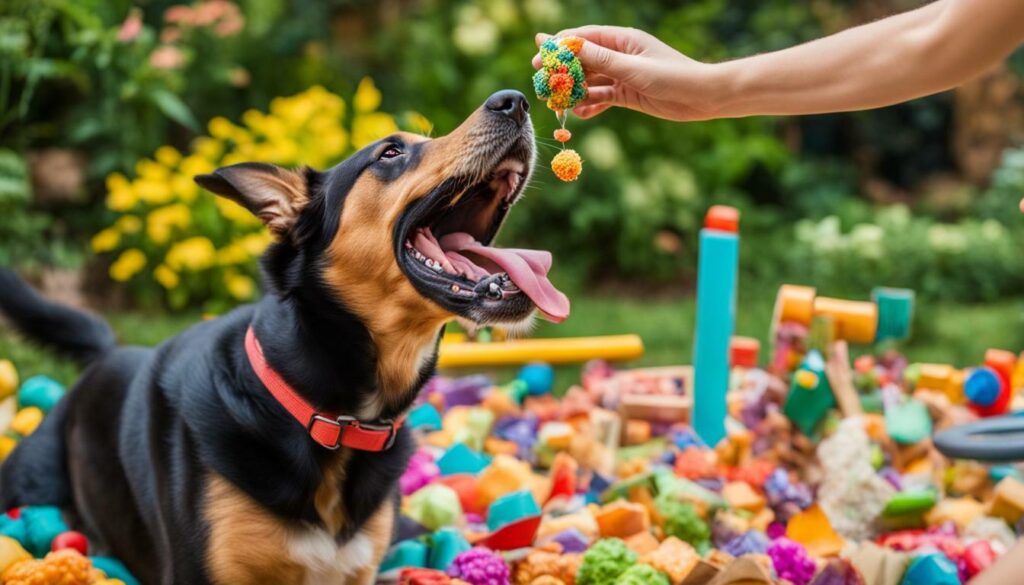
For a scared dog, socialization and gradual exposure to new experiences can play a crucial role in building their confidence. Introducing new people, animals, and environments in a controlled and positive manner can help your dog feel more comfortable in unfamiliar settings.
When socializing your dog, it’s important to start slowly and monitor their reactions closely. Gradually expose them to new people, animals, and environments, and reward them for calm and confident behavior. Be sure to avoid overwhelming your pet with too much too soon, as this can backfire and increase their fear and anxiety.
One effective technique for socialization is systematic desensitization. This involves exposing your dog to a low-level version of the stimulus that triggers their fear, and gradually increasing the intensity over time as they become more comfortable. For example, if your dog is afraid of other dogs, you could start by introducing them to a calm, friendly dog from a distance, and gradually move closer as your dog becomes more relaxed.
Remember, building confidence in a scared dog takes time and patience. By providing a safe and supportive environment, using positive reinforcement, and gradually exposing them to new experiences, you can help your pet overcome their fears and lead a happier, more fulfilling life.
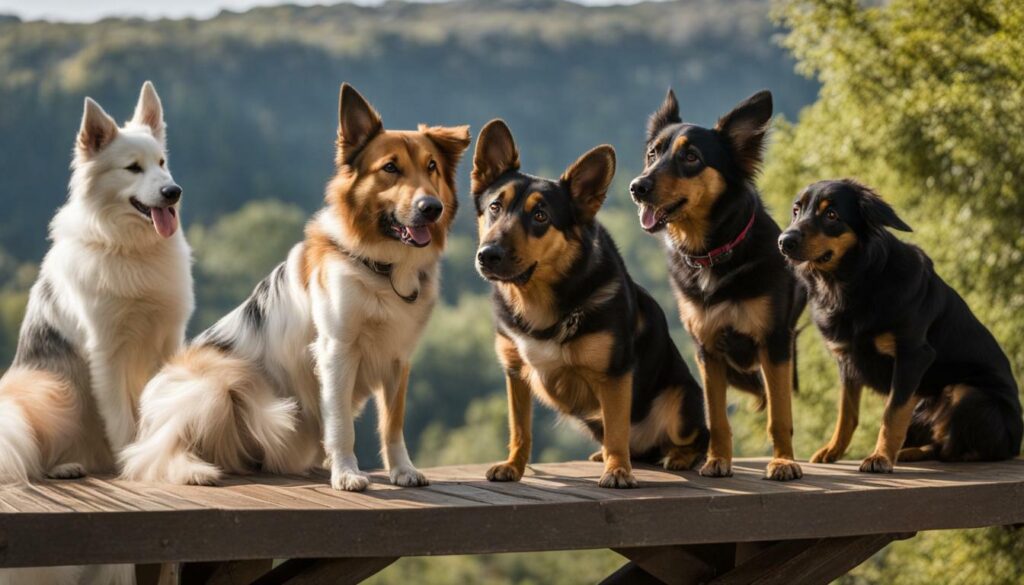
Fear-based aggression is a complex behavior that requires careful evaluation and training. Dogs may display aggression when they feel threatened or scared, and this behavior can be triggered by a variety of stimuli. Understanding the root cause of fear-based aggression is critical for developing effective training methods that address the underlying issue.
Common triggers for fear-based aggression in dogs include loud noises, unfamiliar people or animals, and being in unfamiliar environments. Owners must remain alert and attentive to their dog’s behavior to identify triggers and develop avoidance techniques to prevent stressful situations.
Training a dog with fear-based aggression requires a gradual, controlled approach that gradually builds the dog’s confidence and trust. Positive reinforcement techniques such as reward-based training and gradual exposure to triggers can help modify this behavior over time.
If your dog’s fear-based aggression is severe or persistent, it may be necessary to seek professional assistance from a skilled dog trainer or behaviorist. These professionals can provide expert guidance and support to develop a customized training plan that addresses your dog’s specific needs.
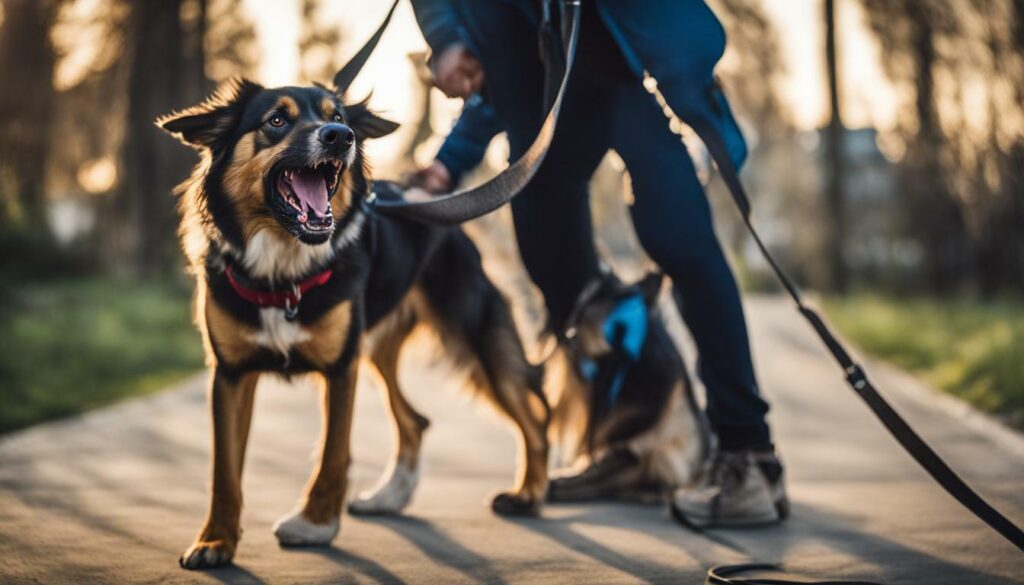
Identifying Triggers and Avoidance Techniques
If you have a scared dog, it’s essential to identify their triggers that cause anxiety or fear. Common triggers include loud noises, new environments, unfamiliar people, or other animals. Once you have identified triggers, work to avoid them where possible. This means steering clear of situations that may cause your dog distress.
For example, if your dog is frightened of loud noises like thunder or fireworks, create a safe space for them in your home where they can feel secure and comfortable. This may include playing calming music, using a weighted blanket, or providing soothing scents to help your dog relax.
Avoidance techniques don’t necessarily solve the underlying issue, but they can help to reduce stress and allow you to work on building your dog’s confidence in a separate setting. It’s important to note that avoidance should not be a long-term solution, and you should work to address your dog’s behavior through training techniques.
Overcoming dog anxiety is a gradual process, and each dog will respond differently to training methods. By identifying triggers and using avoidance techniques in combination with training, you can help your dog build confidence and overcome their fears.

Building trust is a crucial aspect of training a scared dog. In addition to training techniques, bonding activities can help strengthen your relationship and create a more secure environment for your pet. Engaging in these activities will not only build your dog’s confidence and trust in you, but it can also be a fun and rewarding experience for both of you.
One of the most effective bonding activities is spending quality time with your pet. This can involve playing games, going for walks, or simply cuddling on the couch. By spending time with your dog on a regular basis, you’ll establish a bond of trust and love that will make training much easier.
Another great way to build trust is through grooming. Brushing your dog or giving them a bath can be a calming experience that helps your pet feel more secure around you. This activity also allows you to physically connect with your pet and create a positive association between grooming and bonding.
Training your dog to perform new tricks can also be a bonding activity that builds trust. Start with simple commands like “sit” or “stay,” and gradually work towards more complex tricks. Celebrate each achievement with praise and rewards, and you’ll soon find that your dog is more willing to trust and obey you.
Remember, building trust takes time and patience. Don’t get frustrated if your dog doesn’t immediately respond to bonding activities. Stay consistent and persistent, and you’ll gradually see progress.
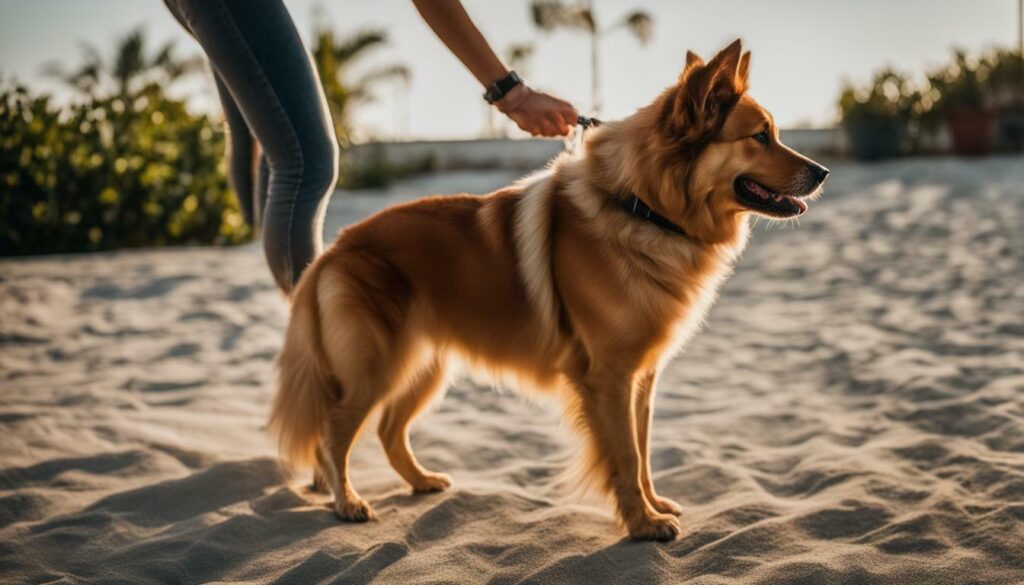
Training a scared dog requires a consistent and patient approach. It’s essential to establish a routine that your dog can rely on, and that creates a sense of security and consistency for them. Consistency in training means using the same commands and techniques each time you work with your dog. This approach helps them understand what you want them to do, and they’ll respond more positively to your instructions.
Patience is key when working with a scared dog. Training can be a slow process, and progress may not always be visible right away. It’s important to remain calm and patient, even when your dog is struggling. Remember that they’re doing their best, and with time and encouragement, they’ll improve.
When training a scared dog, it’s important to keep sessions short and consistent. Ten to fifteen-minute sessions, two to three times a day, can be much more effective than hour-long sessions once a week. These shorter sessions keep your dog engaged and focused, and you’ll make progress more quickly.
Remember to take breaks when training your dog. If you or your pet get frustrated or overwhelmed, it’s okay to pause the training session and come back to it later. Slowing things down and taking a step back can often help your dog better process the information and tasks being presented to them.
Finally, training a scared dog requires a lot of patience and perseverance, but it’s worth it in the end. By providing a supportive and consistent environment for your pet, you can help them overcome their fears, build confidence, and live a happier life.
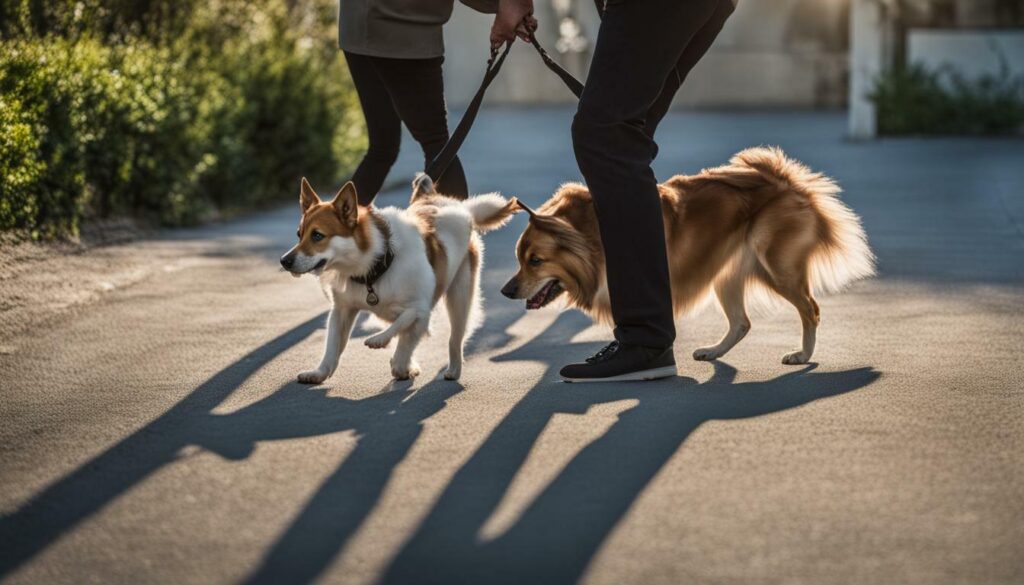
Training a scared dog can be a complex and challenging process. If you’re struggling to make progress with your pet’s behavior modification, seeking professional help may be the best solution. A professional dog trainer or behaviorist can provide valuable insights into your dog’s specific needs and create a tailored training plan to address their fears.
When looking for a professional, it’s essential to do your research and find someone with experience in dog behavior modification. Check their credentials, read reviews, and ask for referrals from other pet owners or veterinarians in your area.
During your initial consultation, the trainer or behaviorist will assess your dog’s behavior, identify triggers, and recommend a personalized training plan. They may also provide one-on-one training sessions or group classes to help your dog build confidence and social skills.
Professional help is especially important if your dog’s fear-based behavior is severe or aggressive. An experienced trainer or behaviorist can provide safe and effective techniques to manage and modify their behavior, ensuring the safety of both your pet and others around them.
Remember, seeking professional help is not a sign of failure or weakness. It’s a proactive step towards helping your fearful dog overcome their fears and live a happier, more confident life.
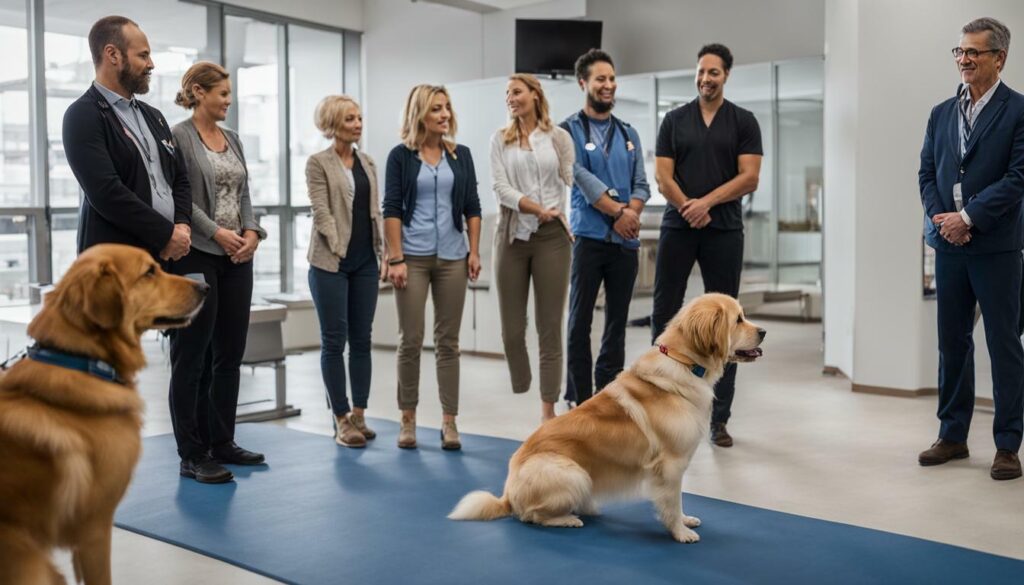
Training a scared dog requires patience, consistency, and a tailored approach. One of the most effective ways to build trust with your scared pet is through bonding activities.
Bonding activities can help your dog feel more secure in their environment and develop a stronger connection with you as their owner. These activities can range from simple playtime to more structured training exercises.
One way to bond with your dog is through exercise. Regular exercise can help reduce stress and anxiety in dogs, making them feel more relaxed and comfortable in their surroundings. Taking your dog on daily walks or engaging them in playtime can strengthen your relationship and build their confidence.
Another way to bond with your dog is through training exercises. Positive reinforcement training, as discussed in Section 5, can be an effective way to build trust and encourage desired behaviors. By using rewards and praise, you can help your dog feel more confident and secure in their abilities.
It’s important to choose bonding activities that are appropriate for your dog’s personality and comfort level. Some dogs may enjoy more structured training exercises, while others prefer more relaxed playtime. Be sure to pay attention to your dog’s body language and adjust activities accordingly.
Remember, building trust takes time, so be patient and consistent in your approach. With regular bonding activities, you can help your scared dog feel more confident and secure in their surroundings.
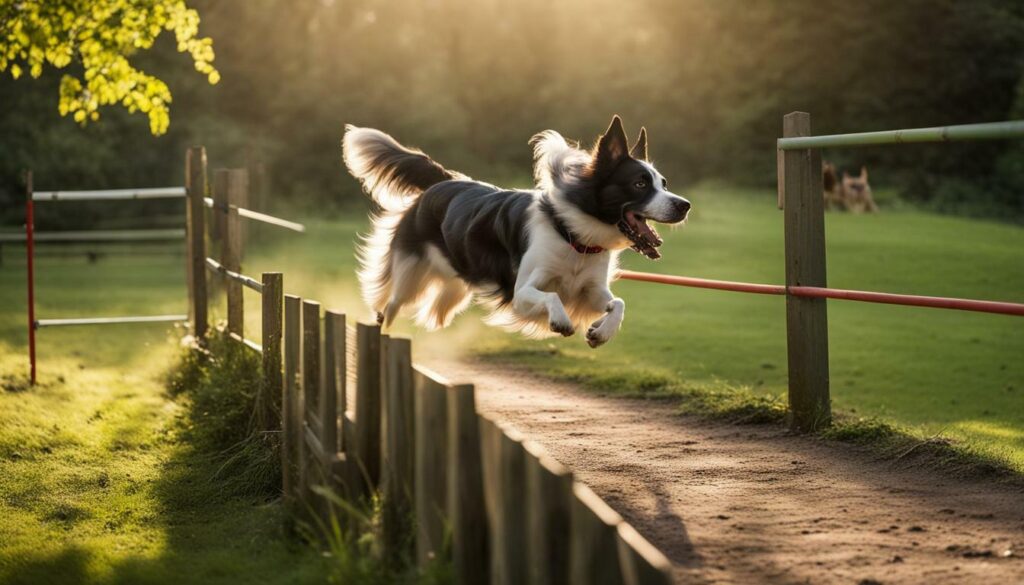
Training a scared dog may seem daunting, but with patience, persistence, and the right approach, you can help your pet overcome their fears and build confidence. By creating a safe and supportive environment, using desensitization and counterconditioning techniques, and implementing positive reinforcement training, you can help your dog feel more secure and comfortable in their surroundings.
Remember that it’s essential to understand your dog’s behavior and triggers, and tailor your training methods accordingly. Socialization and gradual exposure to new experiences can also be powerful tools in building your dog’s confidence.
It’s essential to practice consistency and patience when training a scared dog. Celebrate small wins and progress to acknowledge your pet’s achievements and encourage them to continue improving.
If you find that your dog’s fear-based behavior is not improving despite your efforts, seek professional help from a dog trainer or behaviorist. They can provide additional guidance and support to help your pet overcome their fears.
Training a scared dog is an ongoing process, but with dedication and hard work, you can help your furry friend feel more comfortable, happy, and fulfilled. We hope our guide on how to train a scared dog and these dog training tips have been helpful in aiding you to help your fearful dog overcome their fears.
FAQ
Q: What are the root causes of fear and anxiety in dogs?
A: Understanding the behavior and triggers that contribute to fear and anxiety in dogs is essential for effective training.
Q: How can I create a safe and calm environment for my scared dog?
A: Building a secure space, implementing calming techniques, and using positive reinforcement can help your dog feel more secure.
Q: What is desensitization and counterconditioning, and how can I use these techniques?
A: Desensitization and counterconditioning are powerful methods for modifying fear-based behavior in dogs. We’ll provide step-by-step instructions on how to implement them effectively.
Q: How does positive reinforcement training work for scared dogs?
A: Positive reinforcement training uses rewards and praise to encourage desired behaviors and build a strong bond with your pet.
Q: How can socialization and gradual exposure help my scared dog?
A: Introducing new people, animals, and environments in a controlled and positive manner can help your dog overcome their fears and build confidence.
Q: What causes fear-based aggression in dogs, and how can I address this behavior?
A: Fear-based aggression is common in scared dogs. We’ll explore the causes and provide insights into training techniques to address this behavior.
Q: How can I identify triggers that cause fear and anxiety in my dog?
A: Recognizing triggers is important for successful training. We’ll discuss how to identify and avoid overwhelming situations for your pet.
Q: How can bonding activities help build trust with my scared dog?
A: Bonding activities strengthen your relationship and help your dog feel more secure in their surroundings.
Q: What role does consistency and patience play in training a scared dog?
A: Consistency and patience are crucial. We’ll provide practical tips on maintaining a consistent training routine and the importance of patience throughout the process.
Q: When should I seek professional help for training my scared dog?
A: Sometimes, professional assistance may be necessary. We’ll discuss when it’s appropriate to seek help from a professional dog trainer or behaviorist.
Q: How can I celebrate small wins and acknowledge my dog’s progress during training?
A: Celebrating small wins and acknowledging progress is essential for your dog’s confidence-building journey. We’ll share ways to reward and encourage achievements.
Q: What is the conclusion of training a scared dog?
A: Training a scared dog requires patience, understanding, and a tailored approach. With the tips and techniques provided in this guide, you can help your pet overcome their fears, build confidence, and lead a happier, more fulfilled life.
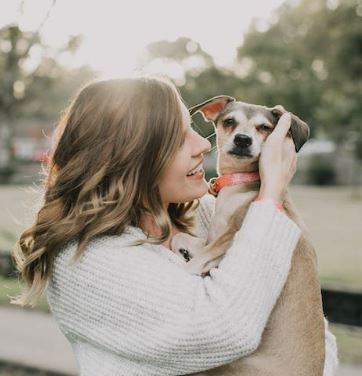
Marissa Delotta, 36, from Dayton, Ohio, is the creative force behind Roverboard.com, a beloved online destination for dog lovers. As a dedicated mom and canine enthusiast, Marissa combines her family experiences with her love for dogs to offer a platform where dog owners can exchange tips, heartwarming stories, and advice. Her website has become a vibrant community for sharing the joys of dog parenting. In her free time, Marissa enjoys exploring dog parks with her family and volunteering at local animal shelters.

